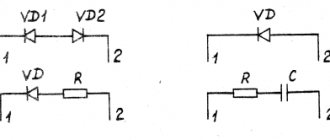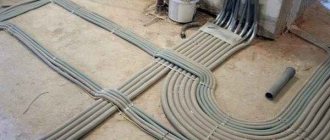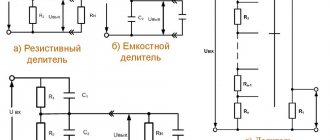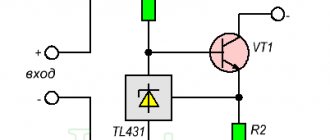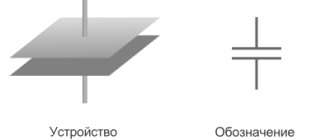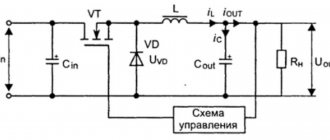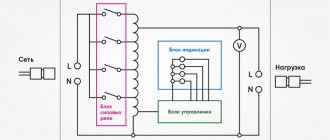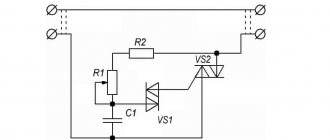Diode. Part 1
Somehow I didn’t really paint this simple detail.
Well, a diode and a diode. Nipple system. It lets you through in one direction, but doesn’t let you through in the other, which is easier. In principle, yes, but there are nuances. This article will be about them, and a little about the rough choice of this part. ▌Valve
In a nutshell, in our sewer electrics for plumbers, the diode is a valve. Something like this:
And yes, it would be a big assumption to assume that the valve flows in one direction and not in the other. In fact, everything is somewhat more complicated. In fact, the valve has a certain elasticity of the spring, and so until the direct pressure overcomes this spring, there will be no flow, even in the forward direction.
This is equally true for a diode. The diode has such a parameter as voltage drop. For Schottky diodes it is about 0.2…0.4 volts, and for conventional diodes it is about 0.6…0.8 volts.
Three simple conclusions follow from this knowledge.
1) In order for current to flow through the diode, the voltage across the diode must be higher than its voltage drop.
2) No matter what current flows through the diode, there will always be a voltage across it approximately equal to its voltage drop (that’s why it’s called that way). Those. The diode resistance is nonlinear and decreases with increasing current.
3) By connecting a diode in series with the load, we will lose a voltage across the load equal to the voltage drop of the diode. Those. If you put a diode in a 4.5 volt battery to protect against polarity reversal, you will lose 0.7 volts from the batteries, which is quite significant. Your device will stop working much sooner than the batteries actually run out. And the batteries will not be completely drained. In this case, it is better to install a Schottky diode. It has a lower drop than a simple one (but it has its own jokes). Or better yet, a field-effect transistor.
Let there be a graph too:
This is the current-voltage characteristic of the diode. Which clearly shows that it opens at approximately 0.7 volts. Before this, the current is practically zero. And then it grows parabolically upward with increasing voltage. The resistor's current-voltage characteristic would be linear in direct accordance with Ohm's law. And it’s not that the diode does not pass into the return line, but the current there is very insignificant, fractions of a milliampere. But after a certain voltage, the diode suddenly breaks through and it begins to open, the voltage drop is set somewhere at the level of the reverse voltage limit, and then it completely burns out. After all, an increase in current and a large voltage drop across the diode mean large thermal losses (P=U*I). But the diode is not designed for them. So it usually burns out after a breakdown. But if you limit the current or exposure time so that the thermal power does not exceed the design value, then the electrical breakdown is reversible. But this only applies to ordinary diodes, not Schottky ones. Those break through immediately and completely.
And here is the real characteristics of the Vishay 1N4001 diode
Direct current-voltage characteristic, one quadrant is shown, working. It starts somewhere at 0.6 volts. At the same time, the current there is negligible. And then, with increasing voltage, the diode begins to open sharply. At 0.8 volts the current is already 0.2A, at 1 volt it is already 2.5A and so on until it burns out
